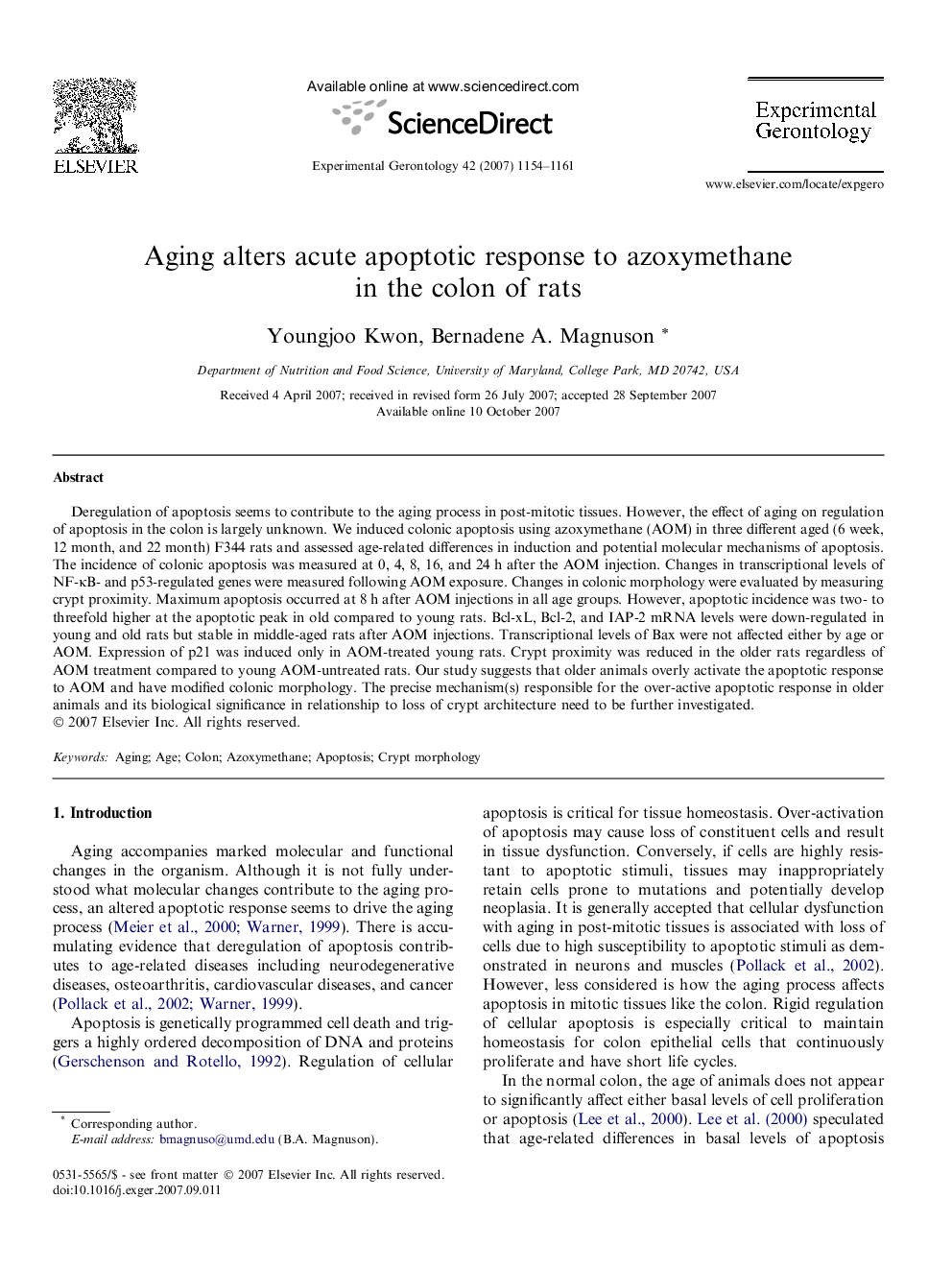| Article ID | Journal | Published Year | Pages | File Type |
|---|---|---|---|---|
| 1907541 | Experimental Gerontology | 2007 | 8 Pages |
Abstract
Deregulation of apoptosis seems to contribute to the aging process in post-mitotic tissues. However, the effect of aging on regulation of apoptosis in the colon is largely unknown. We induced colonic apoptosis using azoxymethane (AOM) in three different aged (6 week, 12 month, and 22 month) F344 rats and assessed age-related differences in induction and potential molecular mechanisms of apoptosis. The incidence of colonic apoptosis was measured at 0, 4, 8, 16, and 24 h after the AOM injection. Changes in transcriptional levels of NF-κB- and p53-regulated genes were measured following AOM exposure. Changes in colonic morphology were evaluated by measuring crypt proximity. Maximum apoptosis occurred at 8 h after AOM injections in all age groups. However, apoptotic incidence was two- to threefold higher at the apoptotic peak in old compared to young rats. Bcl-xL, Bcl-2, and IAP-2 mRNA levels were down-regulated in young and old rats but stable in middle-aged rats after AOM injections. Transcriptional levels of Bax were not affected either by age or AOM. Expression of p21 was induced only in AOM-treated young rats. Crypt proximity was reduced in the older rats regardless of AOM treatment compared to young AOM-untreated rats. Our study suggests that older animals overly activate the apoptotic response to AOM and have modified colonic morphology. The precise mechanism(s) responsible for the over-active apoptotic response in older animals and its biological significance in relationship to loss of crypt architecture need to be further investigated.
Keywords
Related Topics
Life Sciences
Biochemistry, Genetics and Molecular Biology
Ageing
Authors
Youngjoo Kwon, Bernadene A. Magnuson,
